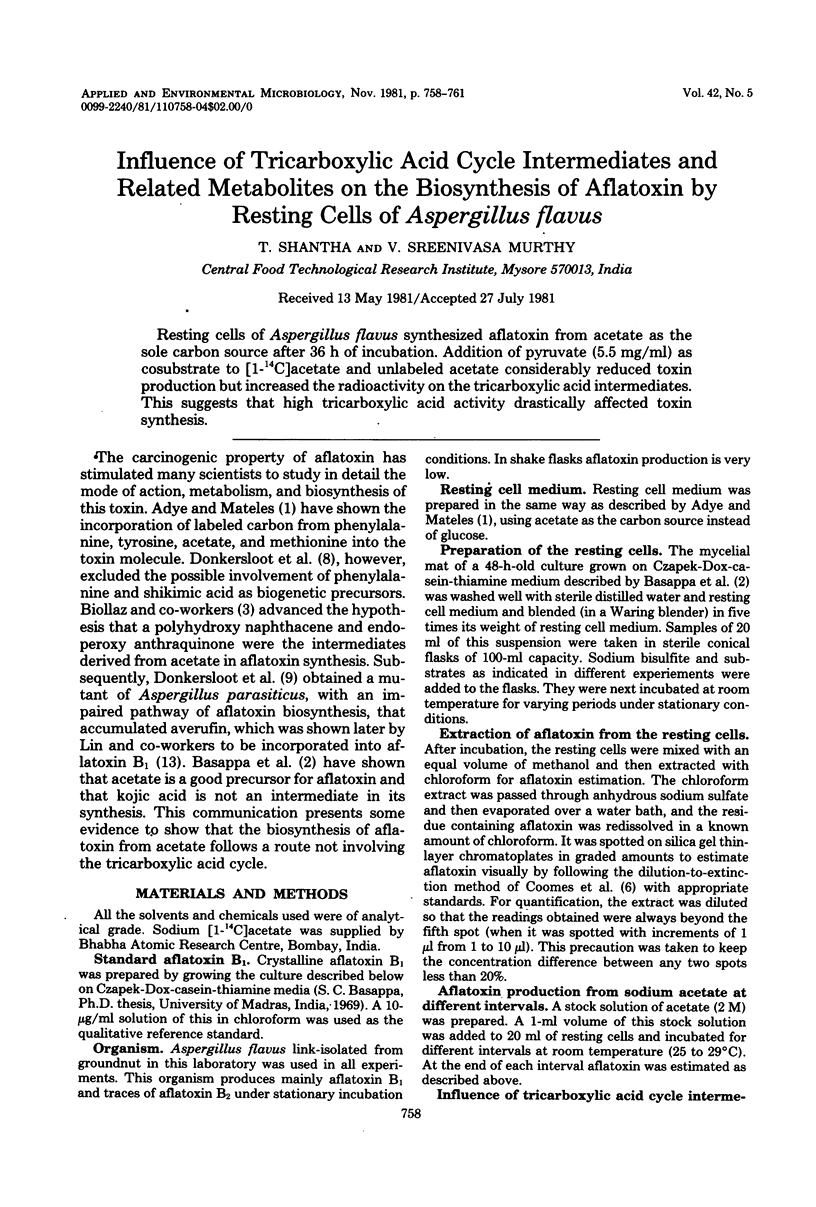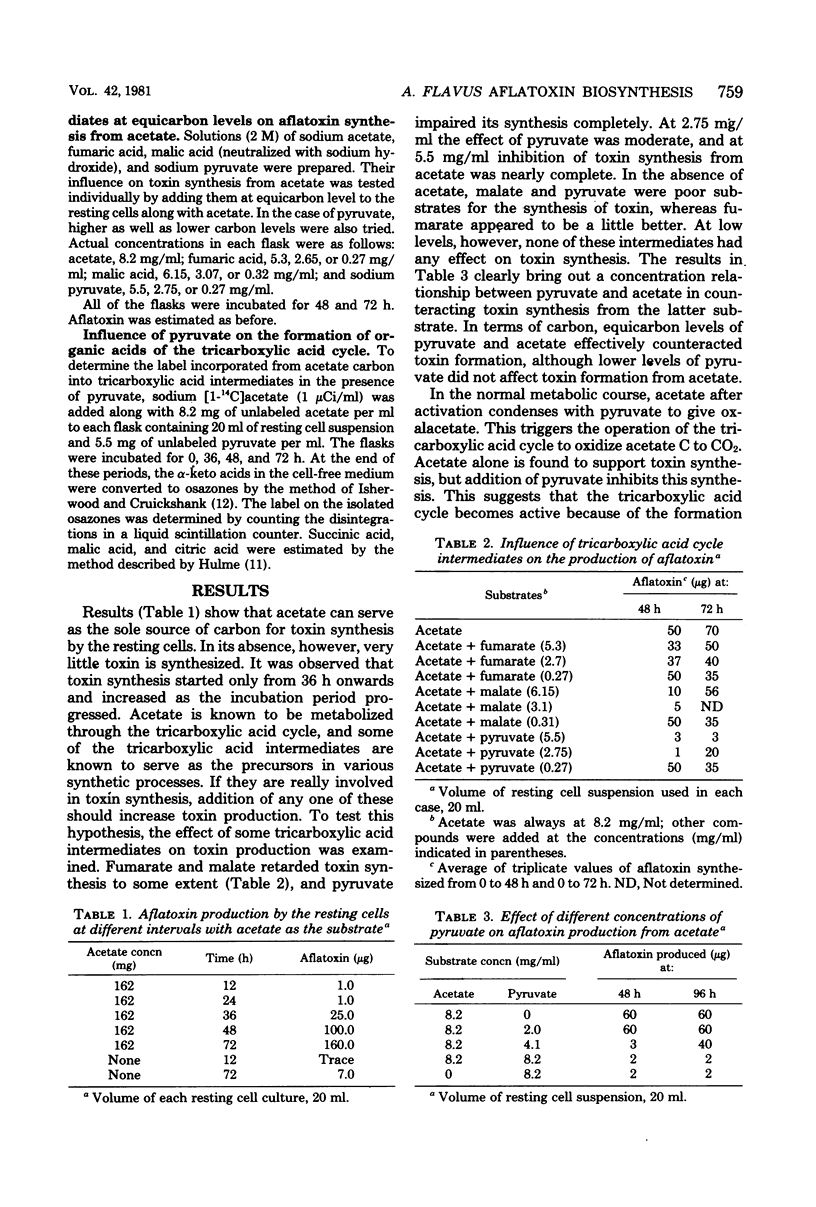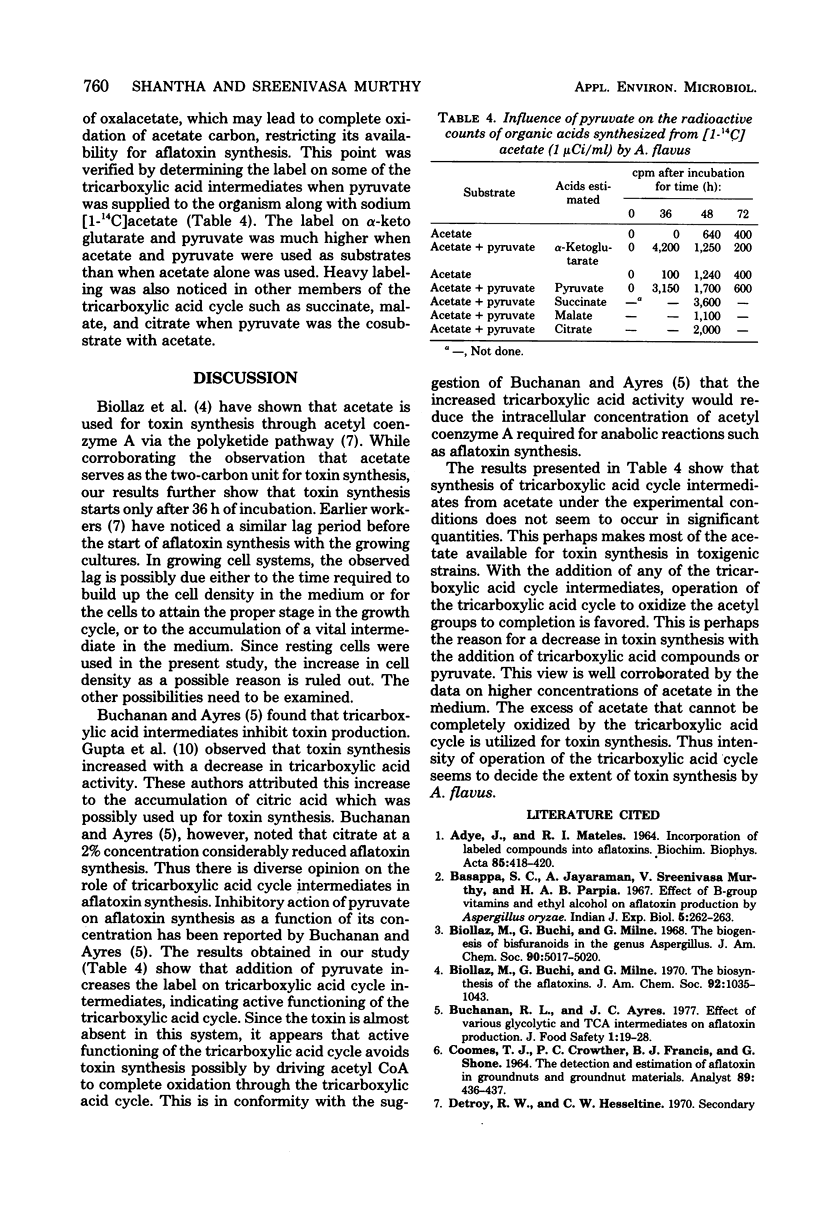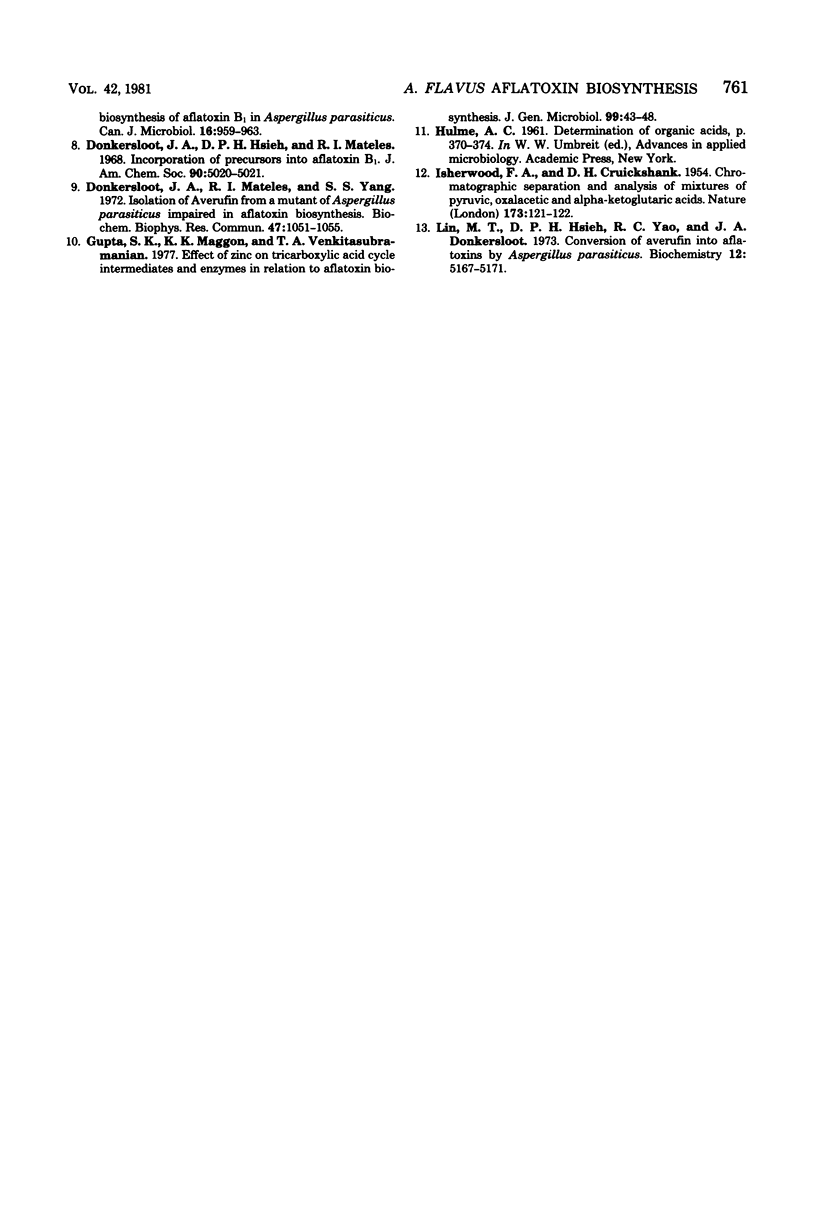Abstract
Resting cells of Aspergillus flavus synthesized aflatoxin from acetate as the sole carbon source after 36 h of incubation. Addition of pyruvate (5.5 mg/m) as cosubstrate to [1-14C]acetate and unlabeled acetate considerably reduced toxin production but increased the radioactivity on the tricarboxylic acid intermediates. This suggests that high tricarboxylic acid activity drastically affected toxin synthesis.
Full text
PDF



Selected References
These references are in PubMed. This may not be the complete list of references from this article.
- ADYE J., MATELES R. I. INCORPORATION OF LABELLED COMPOUNDS INTO AFLATOXINS. Biochim Biophys Acta. 1964 May 11;86:418–420. doi: 10.1016/0304-4165(64)90077-7. [DOI] [PubMed] [Google Scholar]
- Basappa S. C., Jayaraman A., Sreenivasamurthy V., Parpia H. A. Effect of B-group vitamins & ethyl alcohol on aflatoxin production by Aspergillus oryzae. Indian J Exp Biol. 1967 Oct;5(4):262–263. [PubMed] [Google Scholar]
- Biollaz M., Büchi G., Milne G. The biogenesis of bisfuranoids in the genus Aspergillus. J Am Chem Soc. 1968 Aug 28;90(18):5019–5020. doi: 10.1021/ja01020a043. [DOI] [PubMed] [Google Scholar]
- Biollaz M., Büchi G., Milne G. The biosynthesis of the aflatoxins. J Am Chem Soc. 1970 Feb 25;92(4):1035–1043. doi: 10.1021/ja00707a050. [DOI] [PubMed] [Google Scholar]
- Donkersloot J. A., Hsieh D. P., Mateles R. I. Incorporation of precursors into aflatoxin-B1. J Am Chem Soc. 1968 Aug 28;90(18):5020–5021. doi: 10.1021/ja01020a044. [DOI] [PubMed] [Google Scholar]
- Donkersloot J. A., Mateles R. I., Yang S. S. Isolation of averufin from a mutant of Aspergillus parasiticus impaired in aflatoxin biosynthesis. Biochem Biophys Res Commun. 1972 Jun 9;47(5):1051–1055. doi: 10.1016/0006-291x(72)90939-4. [DOI] [PubMed] [Google Scholar]
- Gupta S. K., Maggon K. K., Venkitasubramanian T. A. Effect of Zinc on tricarboxylic acid cycle intermediates and enzymes in relation to aflatoxin biosynthesis. J Gen Microbiol. 1977 Mar;99(1):43–48. doi: 10.1099/00221287-99-1-43. [DOI] [PubMed] [Google Scholar]
- ISHERWOOD F. A., CRUICKSHANK D. H. Chromatographic separation and analysis of mixtures of pyruvic, oxalacetic and alpha-ketoglutaric acids. Nature. 1954 Jan 16;173(4394):121–122. doi: 10.1038/173121a0. [DOI] [PubMed] [Google Scholar]
- Lin M. T., Hsieh D. P., Yao R. C., Donkersloot J. A. Conversion of averufin into aflatoxins by Aspergillus parasiticus. Biochemistry. 1973 Dec 4;12(25):5167–5171. doi: 10.1021/bi00749a023. [DOI] [PubMed] [Google Scholar]


